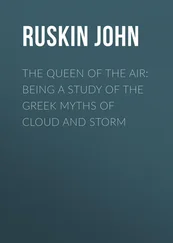George Dodd - The History of the Indian Revolt and of the Expeditions to Persia, China and Japan 1856-7-8
Здесь есть возможность читать онлайн «George Dodd - The History of the Indian Revolt and of the Expeditions to Persia, China and Japan 1856-7-8» — ознакомительный отрывок электронной книги совершенно бесплатно, а после прочтения отрывка купить полную версию. В некоторых случаях можно слушать аудио, скачать через торрент в формате fb2 и присутствует краткое содержание. Жанр: foreign_antique, foreign_prose, на английском языке. Описание произведения, (предисловие) а так же отзывы посетителей доступны на портале библиотеки ЛибКат.
- Название:The History of the Indian Revolt and of the Expeditions to Persia, China and Japan 1856-7-8
- Автор:
- Жанр:
- Год:неизвестен
- ISBN:нет данных
- Рейтинг книги:3 / 5. Голосов: 1
-
Избранное:Добавить в избранное
- Отзывы:
-
Ваша оценка:
- 60
- 1
- 2
- 3
- 4
- 5
The History of the Indian Revolt and of the Expeditions to Persia, China and Japan 1856-7-8: краткое содержание, описание и аннотация
Предлагаем к чтению аннотацию, описание, краткое содержание или предисловие (зависит от того, что написал сам автор книги «The History of the Indian Revolt and of the Expeditions to Persia, China and Japan 1856-7-8»). Если вы не нашли необходимую информацию о книге — напишите в комментариях, мы постараемся отыскать её.
The History of the Indian Revolt and of the Expeditions to Persia, China and Japan 1856-7-8 — читать онлайн ознакомительный отрывок
Ниже представлен текст книги, разбитый по страницам. Система сохранения места последней прочитанной страницы, позволяет с удобством читать онлайн бесплатно книгу «The History of the Indian Revolt and of the Expeditions to Persia, China and Japan 1856-7-8», без необходимости каждый раз заново искать на чём Вы остановились. Поставьте закладку, и сможете в любой момент перейти на страницу, на которой закончили чтение.
Интервал:
Закладка:
The Ganges itself, too – the majestic, far-famed, sacred Ganges – was little disturbed by commotions in May throughout the lower part of its course. Rajmahal, Bhagulpore, Curruckpore, Monghir, Behar, Futwah, Patna, Hajeepoor, Dinapoor, Chupra, Arrah, Bishunpore, Buxar, Ghazeepore – all lie on or near the Ganges between the Hoogly and Benares. Some of these places are centres of commerce for the opium-trade; some are busy with the trading in rice grown in neighbouring districts; others are shipping-places for corn and other agricultural produce; while all regard the Ganges as an invaluable channel, affording intercourse with the rich districts of the west, and with the great focus of authority and trade at Calcutta. Such of these towns as were involved in trouble in later months of the year, will be noticed in the proper chapters; of the others, this narrative is not called upon to treat. One fact, however, may be mentioned in connection with Dinapoor. So early in the year as the middle of February, the Calcutta authorities wrote to the commander at that town, apprising him that a messenger was known to have been sent to the native regiment at Dinapoor, from some men of the 2d Bengal grenadiers, inciting them to mutiny. Major-general Lloyd promised to look out sharply for the messenger, but candidly expressed a doubt whether the astute native would suffer himself to be caught.
Benares may conveniently be described at once; for, whether disturbed or not by mutineers, it is so remarkably situated as to lie in the line of route of all commerce, all aggression, all military movement, between Calcutta and the upper provinces, whether by road, by rail, or by water. Regarded in this light, its possession and security are, and were in an especial degree during the mutiny, objects of the highest importance. This renowned city stands on the left bank of the Ganges, about four hundred and twenty miles by road from Calcutta, and seventy-four from Allahabad. The magnificent river, half a mile wide in the rainy season, forms a kind of semicircular bay in front of the city, which has thus three miles of river-frontage. Among the chief characteristics of Benares are the ghats or flights of fine broad freestone steps, giving access to the river: mostly very solid in construction, and in some cases highly decorated. So numerous are they, that they extend almost in a continuous line along the river’s banks, interrupted here and there by temples. ‘Upon these ghats,’ says a lively traveller, ‘are passed the busiest and happiest hours of every Hindoo’s day: bathing, dressing, praying, preaching, lounging, gossiping, or sleeping, there will be found. Escaping from the dirty, unwholesome, and confined streets, it is a luxury for him to sit upon the open steps and taste the fresh air of the river; so that on the ghats are concentrated the pastimes of the idler, the duties of the devout, and much of the necessary intercourse of business.’ Artists in India have delighted to portray the beauty and animation of this scene; but they cannot, if they would, reveal the hideous accompaniments – the fakeers and ascetics of revolting appearance, ‘offering every conceivable deformity which chalk, cow-dung, disease, matted locks, distorted limbs, and repulsive attitudes of penance, can shew.’
Benares, beyond any other place in India, perhaps, is studded with religious structures. Thirty years ago the Moslem mosques were more than three hundred in number, while the Hindoo temples exceeded a thousand. The pinnacles of the Hindoo pagodas combine to give a very picturesque appearance to the city, viewed from a distance. Large as the number is, the Benares temples, as has been sarcastically observed, are not too many, for religion is ‘the staple article of commerce, through which the holy city flourishes and is enriched.’ The Mohammedan mosques, mostly situated in the northeast quarter of the city, are generally elegant little edifices crowned by small slender minarets, each standing in a garden planted with tamarinds. Most of them have been constructed on the sites, and with the materials, of demolished Hindoo temples. By far the grandest is the great mosque of Aurungzebe, built by that emperor on the site of a temple of Vishnu, which he destroyed to signalise the triumph of Islamism over Brahminism. It rises from the platform above the Madhoray Ghat. The minars or minarets, admired for their simplicity and boldness, taper from eight feet in diameter at the bottom to seven at the top; and though so slender, they are carried up to a height of a hundred and fifty feet, and have each an interior staircase from bottom to top. The streets of Benares have the usual oriental character of narrowness, crookedness, and dirtiness; they are mere alleys, indeed, that will admit no wheel-carriages; nor can beasts of burden pass without sorely disturbing pedestrians. The houses are more lofty than in most Indian cities, generally from three to six stories high; and as the upper stories usually project beyond the lower, the narrow street is almost closed in above: nay, in some cases, the inmates of one house can walk over to the opposite tenement through the upper windows. The houses are, in the better streets, built of stone, small-windowed and gaily painted. During the hot season the citizens are much accustomed to sleep in screened enclosures on the roof, open to the sky above, and to the night-breezes around. There are somewhat under two hundred thousand inhabitants, who live in about thirty thousand houses.
Benares is a religious, not a military city. The district around was at a very remote period the seat of an independent Hindoo state, founded, according to native tradition, twelve hundred years before the Christian era. It subsequently formed part of the dominions of the Rajpoot sovereigns. Then began the Mussulman rule, and Benares became a dependent province under the Moguls. The nawab-viziers of Oude, when the Mogul power was declining, seized Benares; and during some of the political jugglery of the year 1775, the territory was transferred to the East India Company, by whom it has ever since been held. But under whatever dynasty it has been placed, Benares has from remote ages been known as the sacred city of the Hindoos, where all that is remarkable, all that is abominable, in Brahminism, flourishes. It has been described as the Jerusalem of Hindostan – swarming with religious teachers, devotees, mendicants, and sacred bulls. To wash in the Ganges in front of Benares, to die in that city, are precious privileges to the Hindoo. Some writers have given the inhabitants a bad character in what concerns loyalty to their present British rulers. ‘Benares is one of the most unsafe and rebellious cities in Hindostan. It once successfully opposed a house-tax imposed on the people by the British government. There was also recently a strong commotion when the magistrate attempted to equalise the weights and measures. To shew the hostility of the Hindoos of Benares to the English, it may be mentioned that when we lay before Bhurtpore in 1826, no less than thirty thousand sabres were sharpened at the cutlers’ in expectation of our repulse.’ If this statement be well founded, it does indeed denote a perilous state of feeling at the time in question.
Benares, we have said, is not a military city; but so important a place could not safely be left unguarded. Accordingly a British cantonment has been built at Secrole, two or three miles to the northwest. Secrole contains not only the barracks and huts for soldiers, but various civil establishments, and the residences of most of the British population of Benares. The cantonment consists of the usual buildings belonging to the head-quarters of a military division of the Company’s army, and capable of accommodating three or four regiments; it lies on both sides of a small stream called the Burnah Nuddee, crossed by the great road from Benares to Allahabad. On the side of the cantonment furthest from the city are the bungalows of the various officials and European residents: substantially built, well fitted and appointed, and surrounded by pleasant gardens. There are, among the public buildings, a Christian church and chapel, a court of justice, the treasury, the jail, and a mint – the last named never yet appropriated to its destined purpose. Secrole is thus, in effect, the British portion of Benares.
Читать дальшеИнтервал:
Закладка:
Похожие книги на «The History of the Indian Revolt and of the Expeditions to Persia, China and Japan 1856-7-8»
Представляем Вашему вниманию похожие книги на «The History of the Indian Revolt and of the Expeditions to Persia, China and Japan 1856-7-8» списком для выбора. Мы отобрали схожую по названию и смыслу литературу в надежде предоставить читателям больше вариантов отыскать новые, интересные, ещё непрочитанные произведения.
Обсуждение, отзывы о книге «The History of the Indian Revolt and of the Expeditions to Persia, China and Japan 1856-7-8» и просто собственные мнения читателей. Оставьте ваши комментарии, напишите, что Вы думаете о произведении, его смысле или главных героях. Укажите что конкретно понравилось, а что нет, и почему Вы так считаете.












